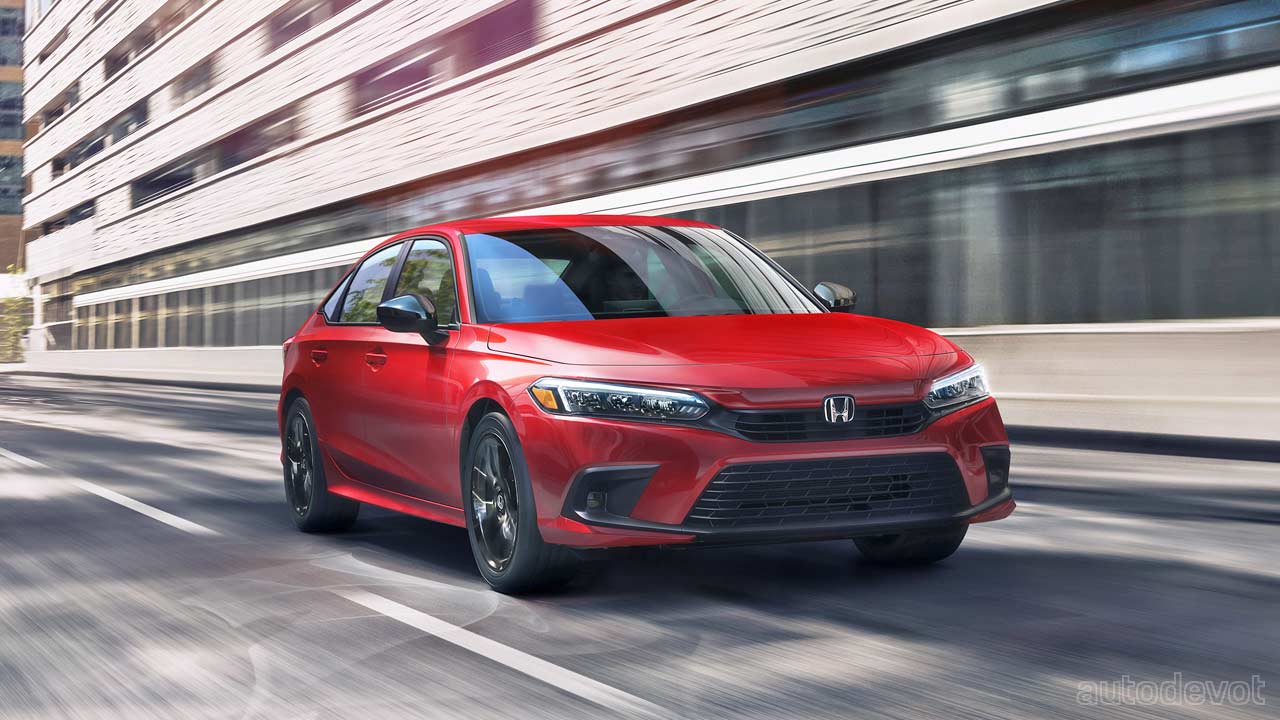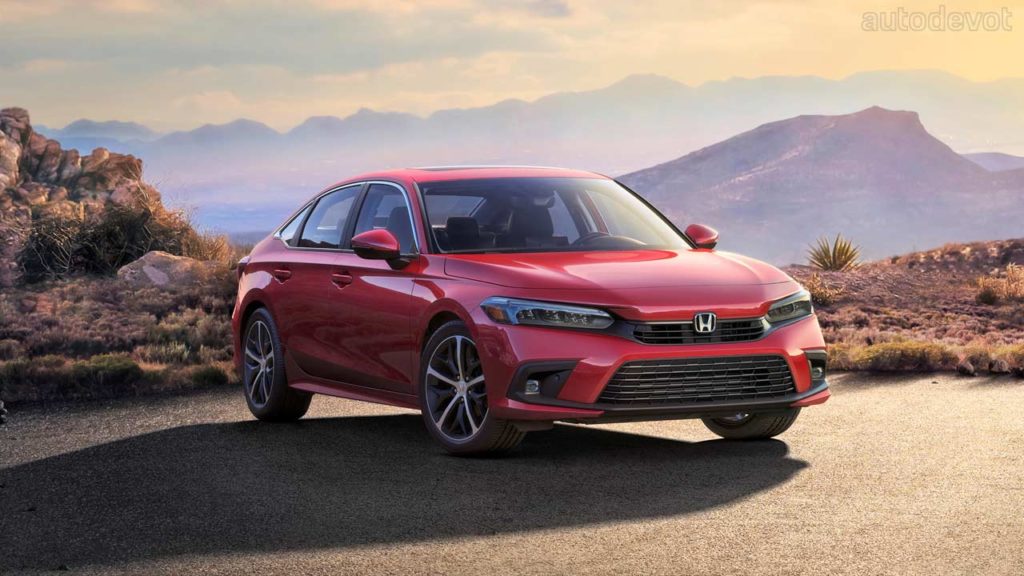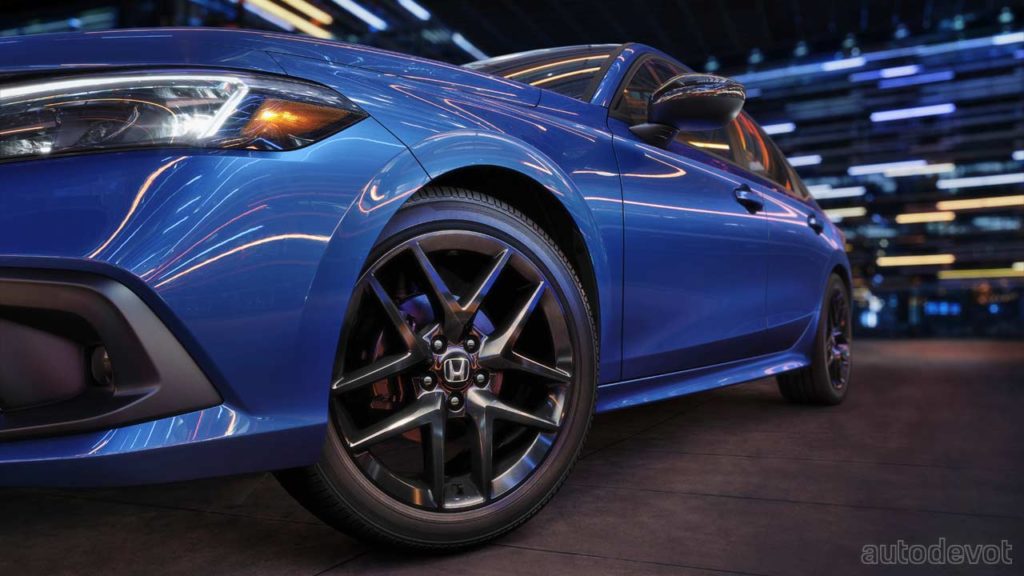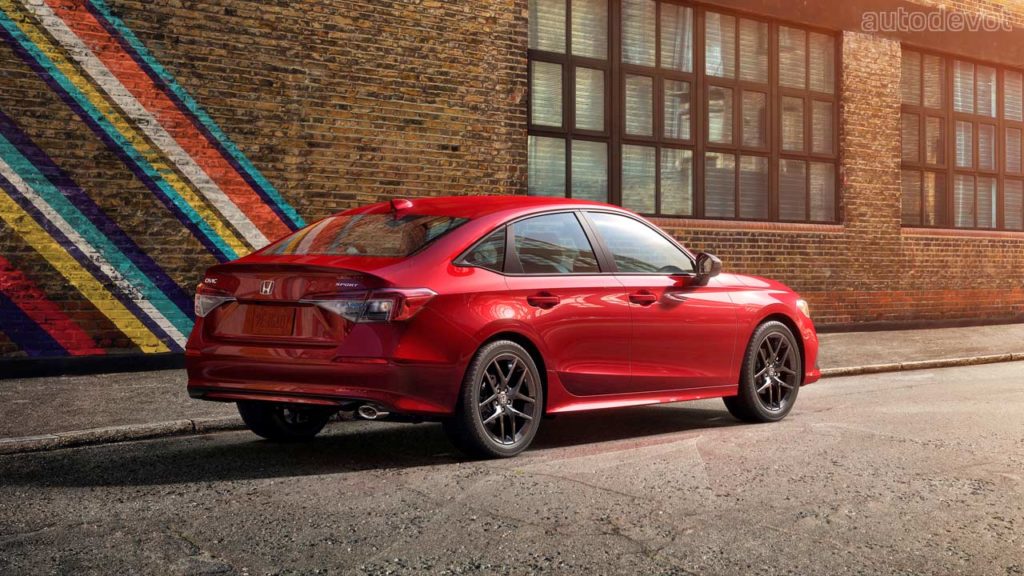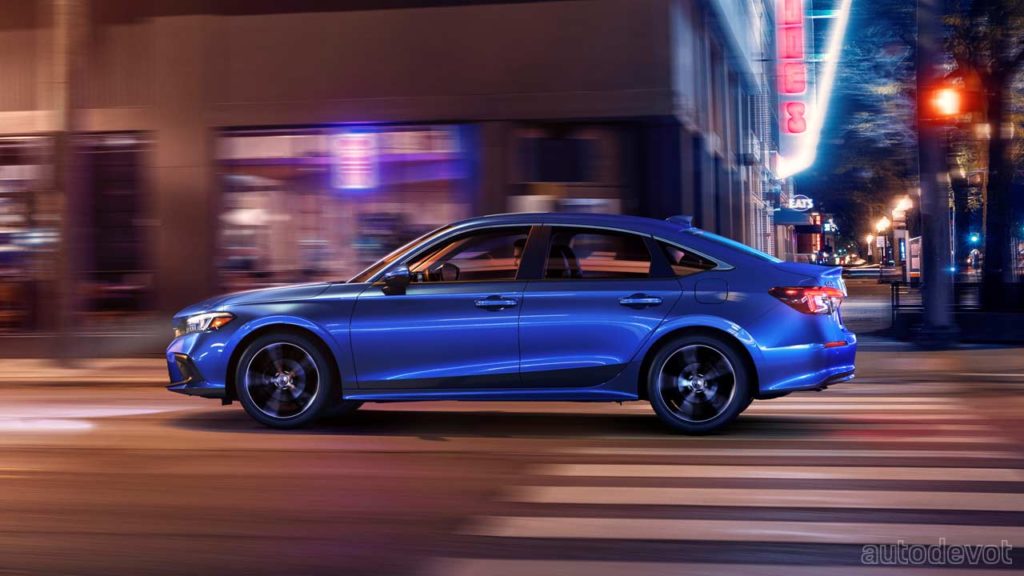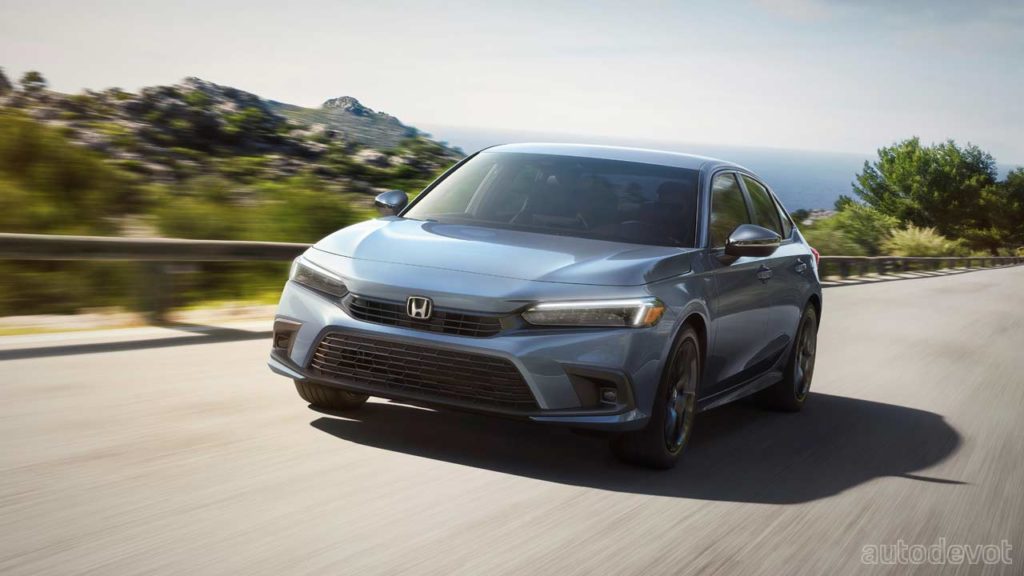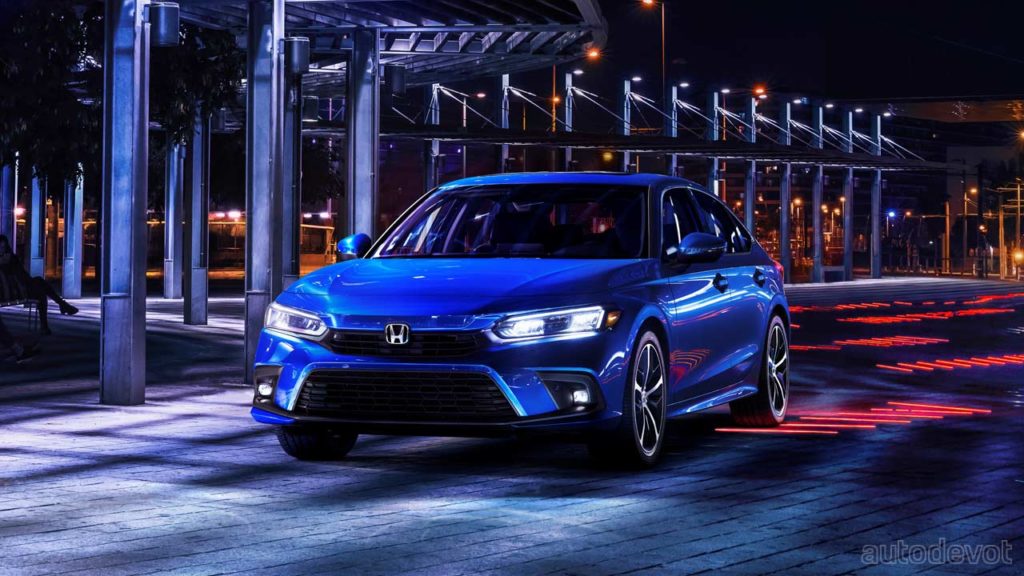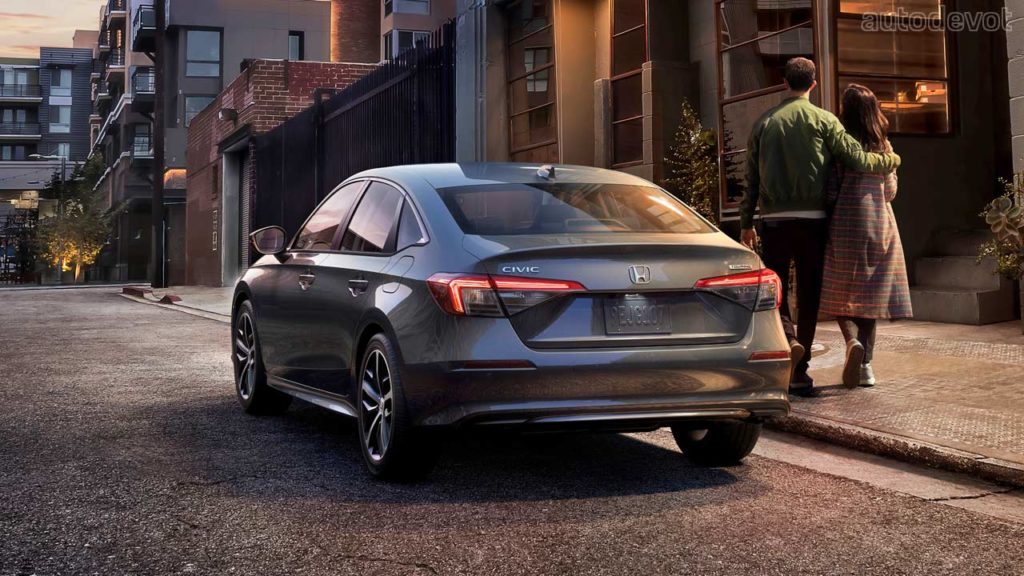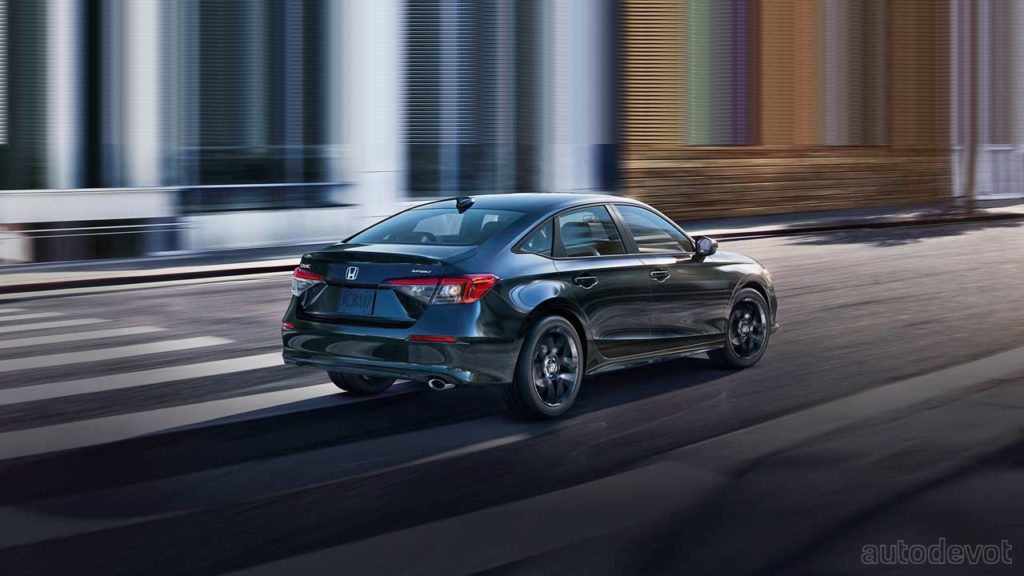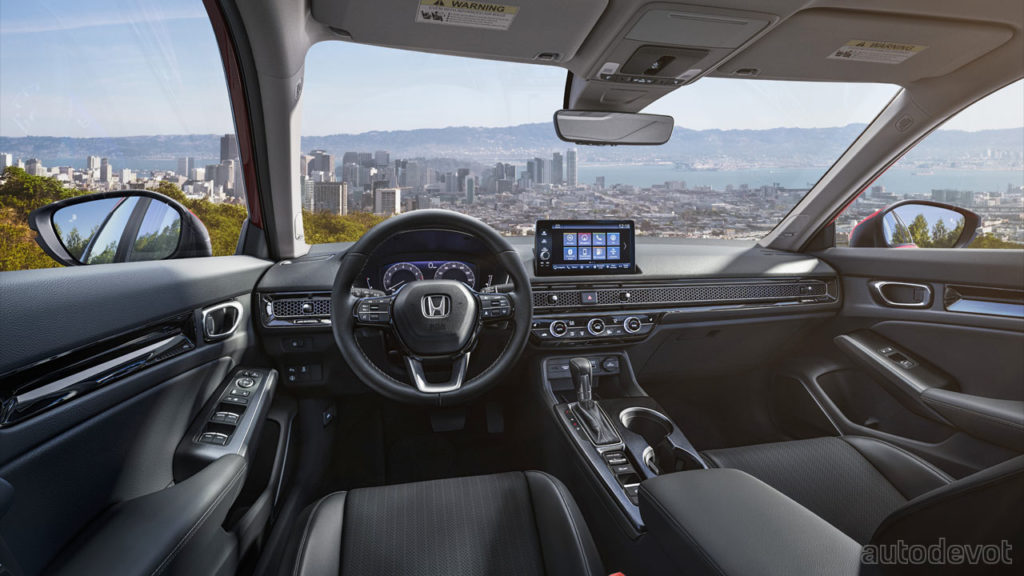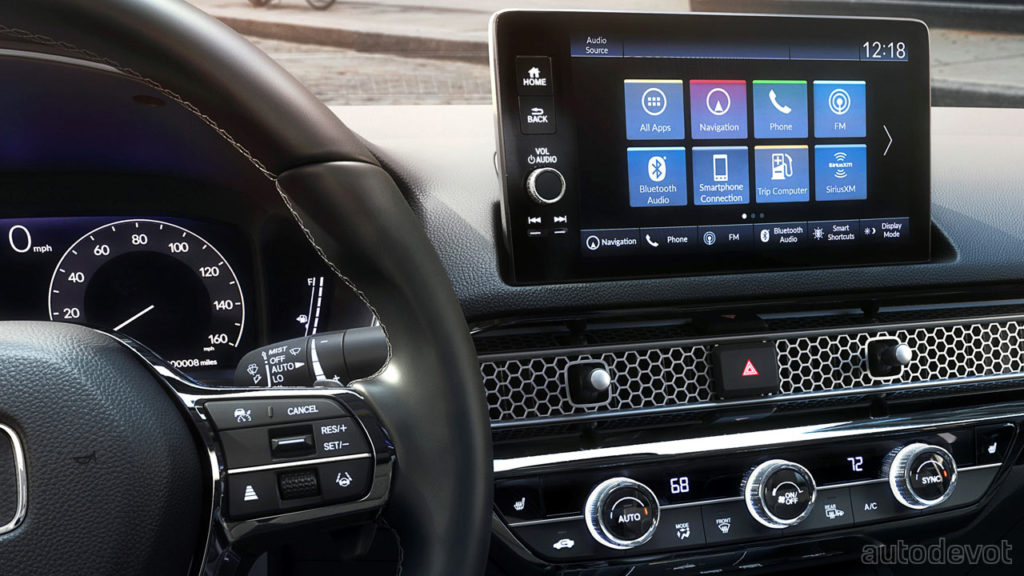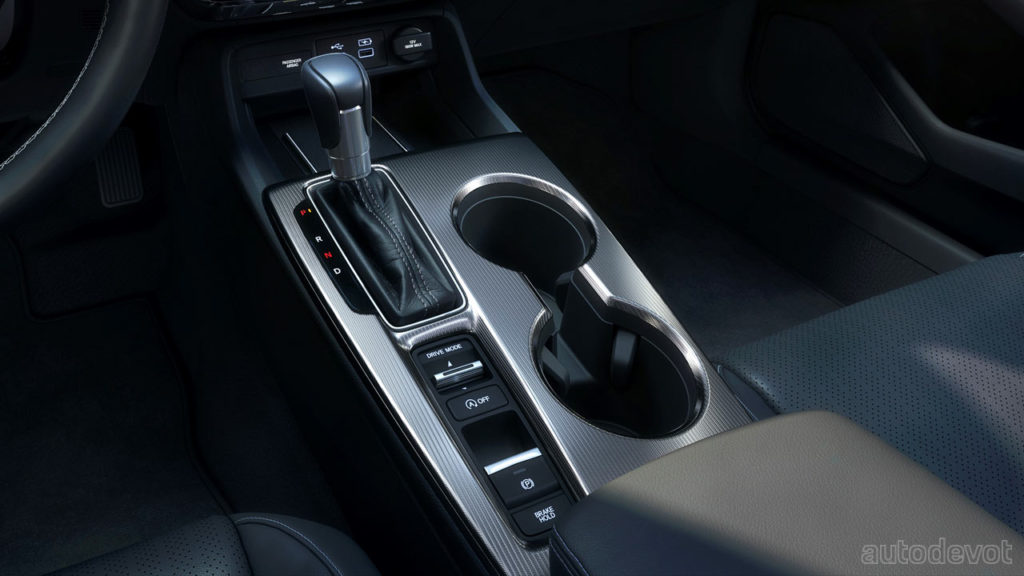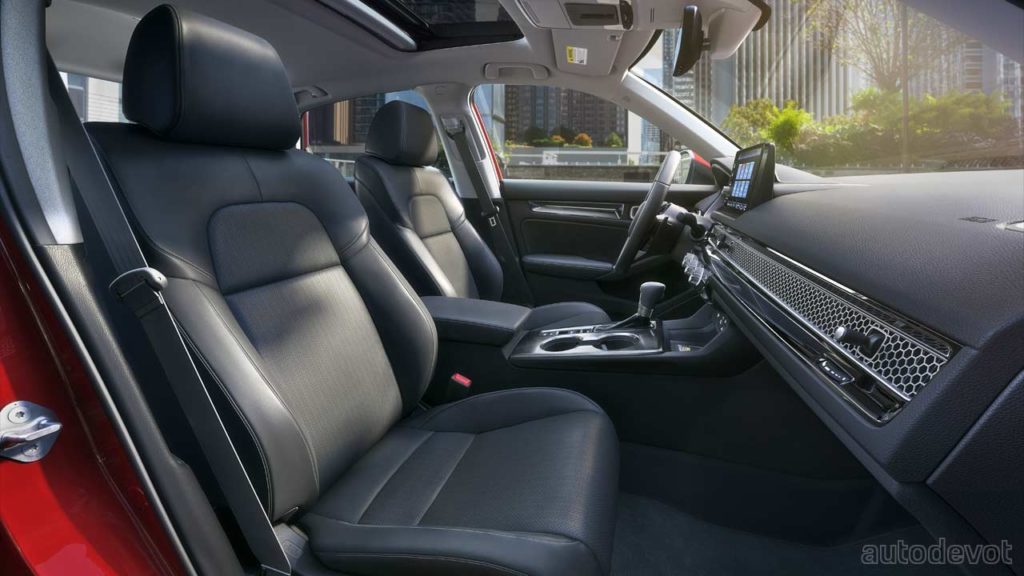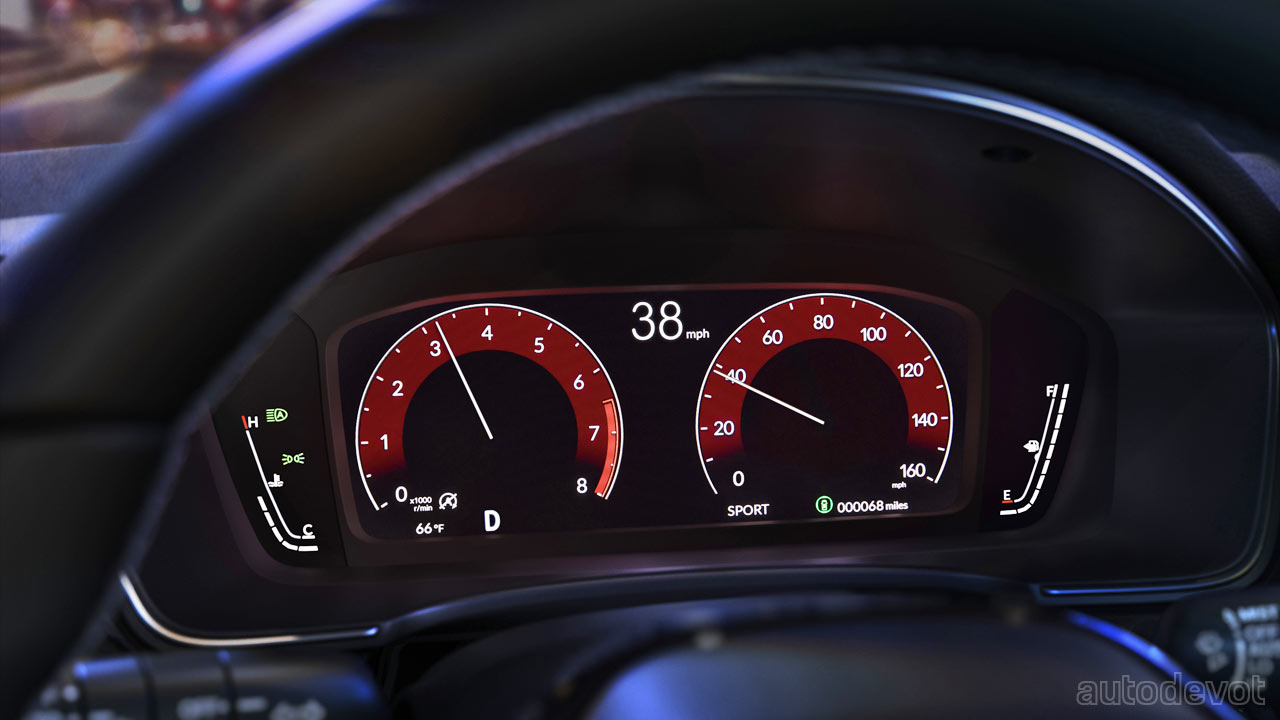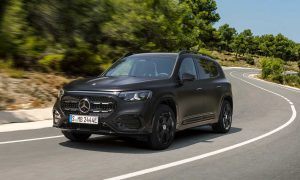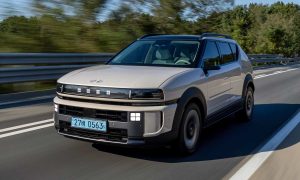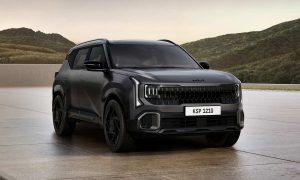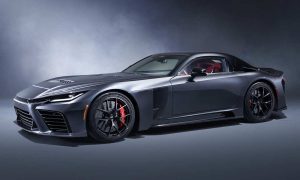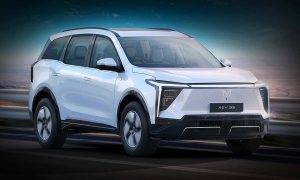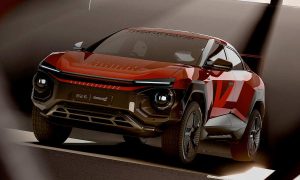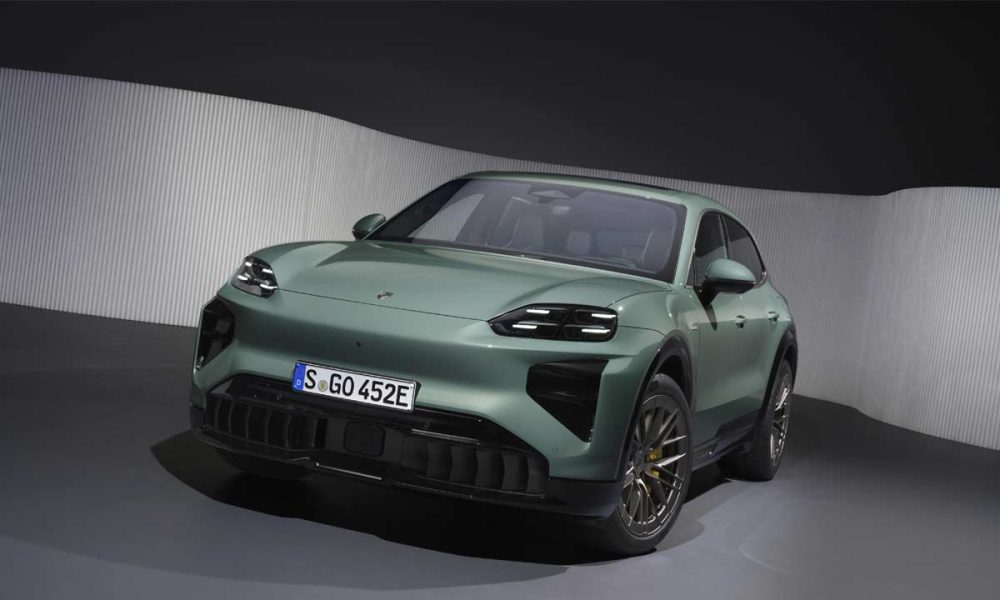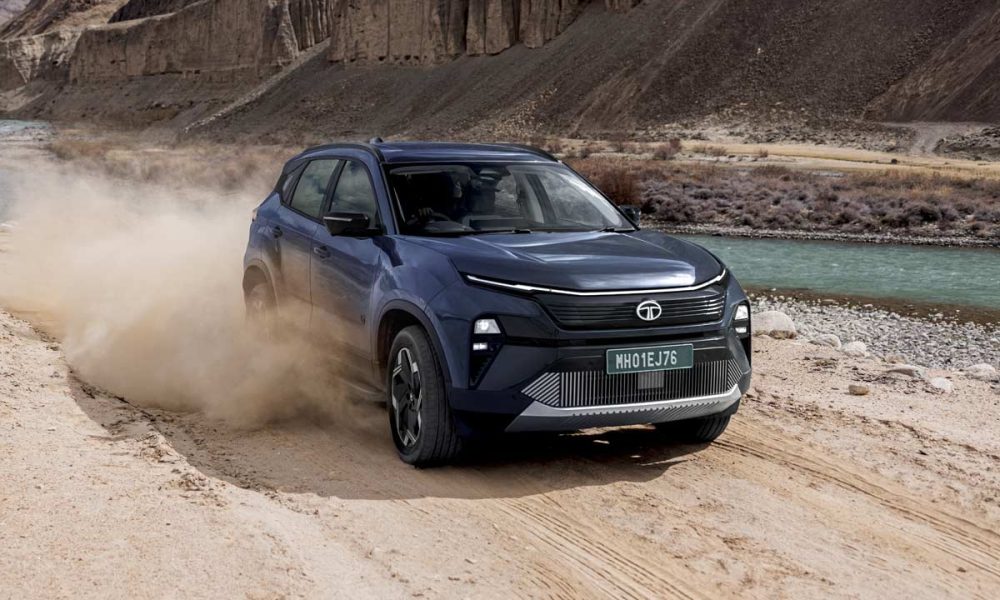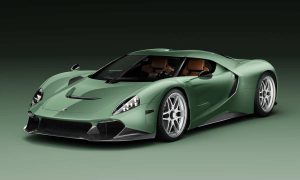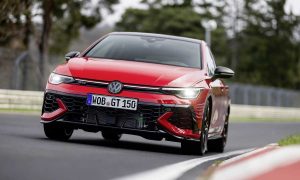New Civic plays it safe, literal or otherwise
Honda has finally decided to fully reveal the 11th generation Civic Sedan after revealing it as a prototype last year and a single image earlier this year. The Sedan has already been listed on Honda’s official U.S. website and is expected to go on sale this fall.
In America, the 2022 Civic Sedan will be available in four trims at launch: LX, Sport, EX, and Touring. These murky photos showcase the Sport and Touring trims. As we discussed in the previous post, the styling hasn’t changed much compared to the last year’s prototype; the rear fascia too including the taillight signature remains the same. However, it has to be said that the prototype has a sporty rear bumper with two tailpipes on either side in a gloss black housing. The main distinguishing factor between the Sport and Touring trims appear to be the 18-inch wheel designs. The LX and EX trims ride on 16-inch steel and 17-inch alloy wheels, respectively.
New dimensions
For those interested to know the dimensions of the vehicle, the 2022 Civic Sedan measures 4,674 mm long (184.0-inches), 1,801 mm wide (70.9-inches) and 1,415 mm tall (55.7-inches). Compared to the 10th gen Civic Sedan, the 11th gen has slightly grown in size. It also boasts a wheelbase of 2,736 mm (107.7-inch), which is an increase of 36 mm over the outgoing model.
As for construction, Honda claims the 11th generation Civic body structure to be the most rigid in Civic history, with an 8% improvement in torsional rigidity and 13% improvement in bending rigidity over the previous generation. Also, the stiffer structure is claimed to improve the ride, handling and NVH.
The front MacPherson struts feature new low-friction ball joints and front damper mount bearings to improve steering feel and self-centering, and the spring and damper alignment has been optimized to minimize operational friction. At the rear, the track is 0.5-inch wider for enhanced stability. In addition, the two rear lower arms are equipped with a new bushing that reduces noise and vibration inside the cabin, while also promoting better straight-line stability and turn-in, Honda elaborated.
The cabin has a clean and simple layout and still retains the important physical knobs and buttons which are being replaced with touchy nonsense these days at a rapid pace. My personal favorite design element is the honeycomb mesh pattern for the air vents that stretches across the dashboard. The mesh actually conceals the air vents. Also, notice the joystick-like controls to adjust the airflow.
Depending on the trim, features list includes a 10.2-inch LCD instrument display, 9-inch central touchscreen, Apple CarPlay & Android Auto connectivity, 12-speaker Bose audio system, and Qi wireless charging.
Safety and driver assistance
The Honda Sensing suite of active safety and driver assistance systems comes standard across all trims; the technology now uses a new single-camera system that is claimed to provide a wider field of view compared to the previous radar-and-camera-based system. Traffic Jam Assist, Adaptive Cruise Control (ACC), and Lane Keeping Assist System (LKAS) are part of the system. The Touring model also gets Low-Speed Braking Control. The EX and Touring models add Blind Spot Information System (BSI); the latter gets Cross Traffic Monitor as well.
Moving on to the juicy bits of the story then, the LX and Sport trims are available with a 2.0-litre (1,996 cc) 4-cylinder naturally aspirated petrol engine with 118 kW (160 metric hp) at 6,500 rpm and 187 Nm (138 lb-ft) of torque at 4,200 rpm. The EX and Touring trims pack a 1.5-litre (1,498 cc) 4-cylinder turbocharged petrol engine that pumps out 134 kW (182 metric hp) at 6,000 rpm and 240 Nm (177 lb-ft) of torque between 1,700-4,500 rpm. Both engines are hooked up with a CVT.

Leave a Reply
Note: Comments that are unrelated to the post above get automatically filtered into the trash bin.
